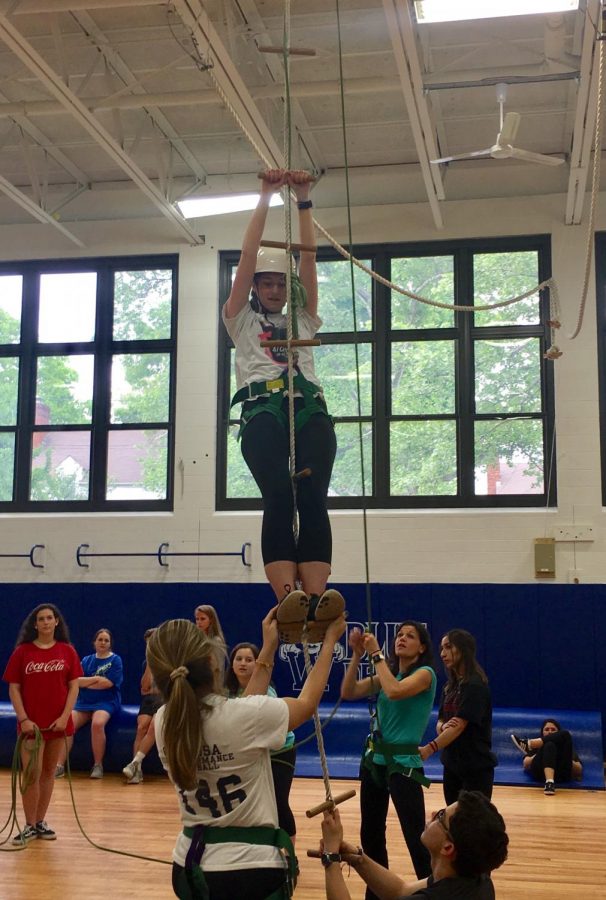Project Adventure fosters teamwork, trust
Photo Sam Stravach
WHS junior Greta Horn climbing the firecracker ladder in Project Adventure.
I stand with my arms straight out in front of me. My friend stands across from me, her one arm between mine and her other outside of mine. The entire class is in a line with their arms up. At the end of the line, one classmate stands on a table, shaking, as she prepares to fall backward into our arms.
“Falling,” she says. “Fall away,” my classmates and I respond. And with that, she drops, and our arms bend slightly as we catch her and hold her weight.
This is just an average day in Project Adventure, an alternate physical education class that WHS students take for one marking period during their freshman and junior years.
Throughout Project Adventure, students work together to learn how to problem-solve and communicate better with classmates.
According to Physical Education Teacher Ms. Lindsey Ginex, Project Adventure helps with “learning to be a leader, learning when it’s OK to be a follower, being comfortable speaking up, sharing opinions … and then problem-solving in general.”
During freshman year, I recall the first week of activities, where we all stood around for half of the period attempting to yell over people, trying to figure out how to complete the particular task at hand. But by the end of the marking period, we had learned how to communicate effectively. There was a lot less bickering and we were able to succeed in the challenges that we faced.
There was something remarkable about this change. By the end, every student had a role. Students who were typically quiet cooperated with louder students to complete one goal; it helped students break out of their comfort zones and communicate better, which is one of the reasons why having a class like Project Adventure is so important.
In addition to getting reserved students involved, Project Adventure also accommodates students who do not identify as being the athletic, sporty type.
Students who dread participating in traditional sports can find a place to thrive in Project Adventure. Since the class is not focused on one’s athletic ability, it challenges students in a different way. As a result, students in the two classes are graded on different criteria.
In physical education, students are graded on readiness, attitude, physical participation and safety. On the other hand, in Project Adventure, students are graded on communication, cooperation, trust, initiative and attendance.
When teachers are grading students for Project Adventure, they focus more on the student’s cooperation and communication rather than on their athletics. This allows for students to participate in a non-athletic way and still do well in the class.
Although some people dislike Project Adventure and view it as dangerous and uncomfortable because of activities like trust falls and climbing, the focus of Project Adventure is to challenge yourself and step outside of your comfort zone.
“That’s the nice thing about Project Adventure: It is challenge by choice,” Ginex said. “You decide what you do or what you don’t want to do and to what level.”
For students who accept these risks, the reward is well worth it. They will learn to communicate better, trust their classmates and be problem-solvers, which are all important life skills to learn.

